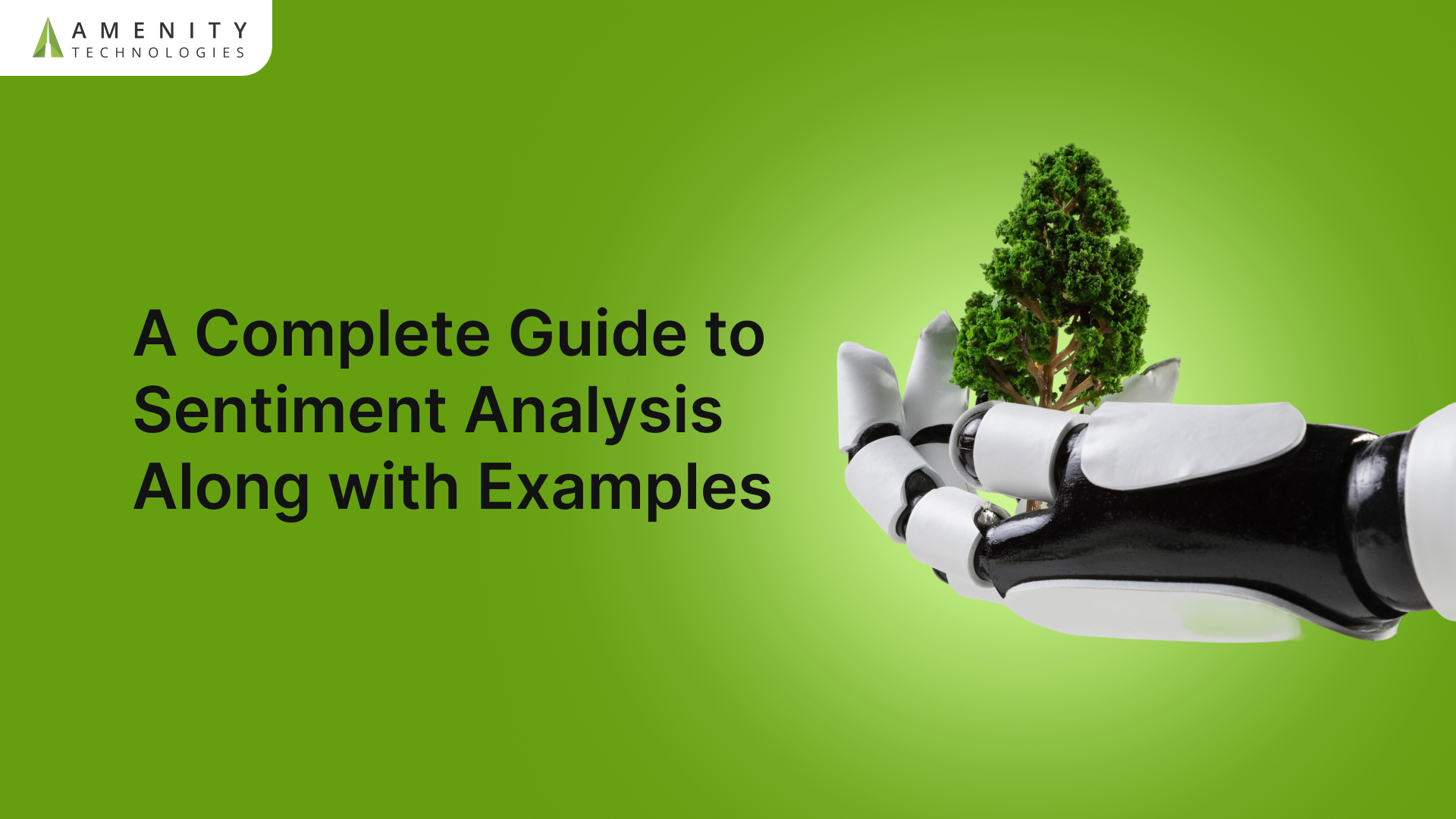How well do you really understand what your customers feel? Can you spot sarcasm or subtle emotions hidden in reviews or social media posts? Modern sentiment analysis makes it possible to capture these insights accurately.
With advances in NLP sentiment models and machine learning, sentiment analysis tools now read beyond simple positive or negative labels. They reveal deeper opinions and emotions that drive decisions. Whether tracking brand health or improving customer experience, knowing the true sentiment behind the words gives companies a clear edge.
This guide explains effective sentiment analysis techniques, reviews top tools, and shows how to turn emotion data into actionable results.
How Sentiment Analysis Works?
Understanding how sentiment analysis works requires looking at the steps behind turning raw text into meaningful insights. From collecting and cleaning data to choosing the right modeling techniques, each stage affects the accuracy of results.
Step 1. Data Collection and Pre-processing
Collecting data from multiple sources like customer reviews, tweets, and support calls lays the foundation for accurate sentiment analysis. Cleaning this data is essential. Processes include tokenization, which breaks text into manageable pieces, removing stop words that add no value, and handling emojis or slang that often carry emotional weight. Proper pre-processing ensures the text is ready for precise sentiment scoring and classification.
Step 2. Sentiment Modeling Approaches
Different sentiment analysis techniques power models to interpret emotions in text. Lexicon-based methods rely on pre-built lists of words with associated sentiment values. Machine learning models like Naive Bayes and Support Vector Machines learn patterns from labeled data to classify sentiments. More advanced deep learning models, including BERT and RoBERTa, use contextual understanding to capture subtle meaning and improve accuracy across complex datasets.
Step 3. Advanced Techniques: Fine-Grained and Aspect-Based Sentiment
More detailed analysis breaks down sentiment into finer parts. Fine-grained sentiment assigns varying polarity scores beyond just positive or negative. Aspect-based sentiment analysis identifies specific features within a text, like “battery life” or “design,” and evaluates the sentiment related to each. This approach provides deeper insights that help businesses address particular strengths or weaknesses mentioned by customers.
Step 4. Handling Nuance: Sarcasm, Negation, and Multilingual Support
Detecting sarcasm and negation poses challenges in opinion mining. Advanced models use contextual embeddings and cultural knowledge to interpret these nuances more accurately. Multilingual sentiment analysis allows businesses to analyze data in multiple languages, expanding coverage of global customer feedback. These capabilities ensure sentiment insights reflect true customer emotions across diverse markets.
Top Sentiment Analysis Tools in 2025
Choosing the right sentiment analysis tool depends on your specific needs, such as the volume of data, required accuracy, and integration options. Tools fall into three main categories: enterprise-grade platforms, specialized feedback tools, and open-source or DIY options. Each category offers distinct advantages for different use cases.
Enterprise-Grade Platforms
Enterprise-grade platforms offer advanced features like real-time processing, multichannel data integration, and high accuracy. These tools are built to handle large volumes of data and provide deep insights for strategic decision-making.
- Sprout Social excels in social media management with built-in sentiment analysis that captures nuanced emotional signals. It integrates directly with multiple social channels, delivering timely sentiment scoring to help brands monitor reputation and respond quickly to changes.
- Brandwatch focuses on emotion detection, combining sentiment lexicons with context-aware analysis. It supports emoji interpretation and complex contextual signals, allowing brands to understand consumer feelings at a deeper level across social media and online conversations.
- IBM Watson Natural Language Understanding (NLU) offers customizable APIs for precise sentiment scoring and emotion detection. It supports multiple languages and domains, making it a reliable choice for companies needing scalable, accurate sentiment models that fit specific business requirements.
Specialized Feedback Tools
Specialized feedback tools focus on analyzing customer surveys, reviews, and live chat interactions. They deliver targeted sentiment analysis optimized for specific types of customer input, helping businesses quickly act on detailed feedback.
- Lexalytics/Semantria provides domain-specific sentiment analysis techniques designed for survey responses and product reviews. Its models understand industry jargon and context, improving accuracy in extracting opinions and emotions relevant to particular fields like retail or finance.
- Sobot Chatbot offers real-time sentiment tracking within chat conversations. It requires no coding to integrate, allowing customer service teams to monitor emotions as they happen and escalate issues based on detected frustration or dissatisfaction.
Open-Source & DIY Options
These tools are ideal for teams with limited budgets or those who want more control over their sentiment analysis processes. They provide basic functionality and are often easy to customize. Some of the DIY and open-source tools are:
- VADER is a popular lexicon-based tool designed for social media text. It performs well on short, informal posts and handles emojis and slang effectively. VADER offers quick sentiment scoring with positive, negative, and neutral values, making it suitable for lightweight tasks.
- TextBlob extends basic lexicon-based analysis with simple APIs for text classification and polarity detection. It’s beginner-friendly and useful for straightforward sentiment tasks where deep customization isn’t needed.
- Hugging Face Transformers provides access to powerful transformer-based models like BERT. These models can be fine-tuned for domain-specific sentiment detection and support multilingual text. This option fits teams ready to invest in more complex setups for higher accuracy and nuance.
Real-World Examples of Sentiment Analysis
From monitoring social media to analyzing product feedback and customer service interactions, companies gain valuable insights into customer emotions and opinions. Let’s understand real-world examples that highlight how sentiment analysis tools can help in different areas to uncover trends and issues quickly:
1. Brand Monitoring on Social Media
Brands use sentiment analysis tools like Sprout Social or Brandwatch to track how their campaigns perform on social media. These platforms detect shifts in public opinion quickly, spotting rising negative trends or positive spikes. Early detection allows companies to address issues before they escalate and adjust messaging to maintain a strong brand reputation.
2. E-Commerce Product Feedback
In e-commerce, aspect-based sentiment analysis extracts specific opinions from customer reviews. For example, feedback like “size too big” versus “great style” helps brands understand which product features need improvement. This detailed insight informs design changes and marketing strategies to better meet customer expectations.
3. Customer Service Voice-to-Text
Transcribing customer service calls into text enables real-time sentiment scoring of caller emotions. Frustration or satisfaction levels are flagged instantly, allowing agents or supervisors to respond promptly. This improves customer experience and reduces churn by addressing problems as they arise.
4. Campaign Performance Tracking
Tracking sentiment during marketing campaigns reveals consumer reactions at every stage. Brands can measure shifts in emotion and opinion, then adjust strategies based on real-time feedback. This approach ensures campaigns remain aligned with audience expectations and maximize impact.
Benefits & Challenges
Using sentiment analysis offers several clear benefits. It enables real-time alerts on customer opinion shifts, processes large volumes of feedback efficiently, and provides objective insights that reduce reliance on guesswork. Companies also gain competitive advantages by benchmarking their brand sentiment against others.
However, challenges remain. Sarcasm detection still tests many models. Domain mismatch can reduce accuracy when models aren’t fine-tuned for specific industries. Multilingual data requires culturally aware approaches. Constantly evolving slang impacts interpretation, and model bias can skew results.
Overcoming these issues involves regular retraining with updated data, incorporating human review to catch errors, fine-tuning models on domain-specific content, and adopting advanced algorithms capable of handling nuance. These steps improve reliability and ensure insights remain relevant.
How Amenity Technologies Can Help with Sentiment Analysis
Amenity Technologies provides complete sentiment analysis solutions designed to fit your unique needs. We develop custom models using BERT-style transformers trained specifically for your industry and data. Our real-time API integrations connect sentiment insights directly into CRMs, dashboards, and chatbots, enabling immediate action.
We offer multilingual sentiment services that include emotion detection, sarcasm recognition, and contextual understanding to capture true customer intent. Our scalable deployment works across cloud, mobile, and edge environments for both text and speech data.
Ongoing performance tuning and drift management ensure your models stay accurate over time. Whether tracking brand health, analyzing call transcripts, or evaluating product sentiment, Amenity builds and maintains tools that turn raw emotion data into meaningful business intelligence.
Conclusion
Sentiment analysis has become essential for brands, product teams, and support operations. Combining lexicon methods, machine learning, and deep learning models delivers nuanced insights across multiple channels. While challenges like sarcasm and slang remain, they can be addressed with proper model tuning and pipelines. Partnering with experts like Amenity Technologies ensures your organization converts raw sentiment into clear, actionable data that drives growth, loyalty, and resilience.
FAQs
1. What is sentiment analysis and why does it matter?
Sentiment analysis detects emotional tone—positive, negative, or neutral—in text or speech. It helps brands understand customer feelings at scale, spot trends early, and respond quickly.
2. What tools should small teams use?
Start with open-source options like VADER or TextBlob. For real-time, scalable solutions, upgrade to tools like Hugging Face Transformers or Sobot Chatbot.
3. How accurate are sentiment analysis models?
Modern transformer models reach 85–95% accuracy within specific domains. Handling sarcasm or cross-domain texts requires additional fine-tuning.
4. Can sentiment analysis handle multiple languages?
Yes. Enterprise tools and multilingual transformers support over 50 languages. Success depends on cultural context tuning.
5. How often should models be retrained?
Retrain at least quarterly, especially when new slang emerges or topics shift. Fine-tuning with fresh labeled data maintains accuracy.
6. Is sentiment analysis compliant with data privacy?
Absolutely. Amenity ensures compliance with GDPR, CCPA, and similar regulations by anonymizing, encrypting, and securely storing data.












